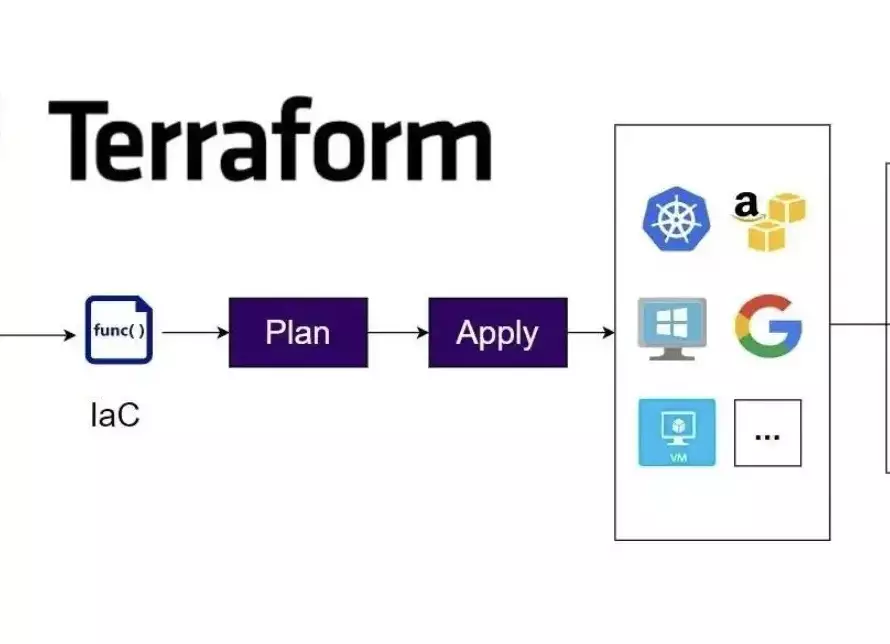More than 7 out of every 10 shopping carts are abandoned before checkout, a staggering 70.19% global average.
Why? Not pricing. Not shipping. But uncertainty and frustration. Shoppers don’t know how something will look on them, or fit their space, or suit them.
That’s your drop-off signal!
Today’s digital shopper expects more than product grids. They want to feel before they buy. And whether you are in fashion, beauty, accessories, or home décor, static images just don’t cut it.
In this blog, you will discover:
- How Virtual Try-On has moved from novelty to expectation?
- Why does it solve core retail friction, cart abandonment, return costs, and slow product launches?
- How can adopting VTON make your catalog smarter, faster, and more trusted by the customer?
If processed images, sample-focused pipelines, and customers’ indecisiveness are slowing you down, it’s time to reimagine your user experience. Virtual Try-On is a game-changer.
Read on to explore the tech, tools, and transformation it makes possible.
Product Photoshoots: No Studio, No Problem
Let’s start with the most universal pain point: e-commerce content creation.
Whether you’re a startup with 100 SKUs or an enterprise with 10,000+, traditional product photography is expensive, slow, and operationally draining. VTON tools now enable AI-powered product imagery that replicates studio-quality shoots without the studio.
- Want to show 12 colour variants of a shirt? No need to shoot 12 times.
- Need seasonal visuals for your homepage? Generate them with a prompt.
- Launching a product in a new market? Instantly localize the model and background.
This isn’t theoretical. Retailers are now creating entire product catalogs with virtual models and digital garments, reducing content costs by up to 80%, while increasing creative agility.
Apparel Try-On: Beyond Size Chart
Fashion e-commerce still battles one stubborn issue i.e. uncertainty. “Will it fit?” “Will it suit me?” These questions lead to hesitation, cart abandonment, and most painfully > returns.
With VTON, you can now show:
- Garments on multiple body types and skin tones.
- Real-time try-on experiences via webcam or phone.
- Fabric drape and movement, so the product feels tangible, not flat.
When shoppers can see themselves in the product, they don’t just buy – they buy confidently. Brands that integrate try-on tech report higher conversion rates and lower return rates within months.
Accessories, Shoes, and Eyewear: Fit, Visualized
One of the most overlooked applications of Virtual Try-On is in accessories. Why? Because size and scale matter just as much as style.
- Trying on glasses digitally is now as easy as a selfie.
- Shoppers can see how big a tote bag is relative to their body.
- Footwear try-on simulates how sneakers or heels look and fit – without needing a physical pair.
Especially for D2C accessory brands, this level of personalization translates directly to higher AOVs and fewer “just browsing” sessions.
Home Decor & Soft Furnishings: Virtual Styling at Home
It’s not just fashion. VTON is proving invaluable in the home & living space – especially where texture, color, and lighting can make or break a purchase.
Imagine letting customers:
- See how a curtain or bedsheet looks in their actual bedroom lighting.
- Mix and match pillows, rugs, and throws in a virtual room setup.
- Preview fabric types and color tones in a showroom-like experience – right from their phone.
Returns in home décor are often driven by misaligned expectations. VTON bridges that gap by giving customers visual control and confidence before they buy.
Virtual Models: Diversity, Scalability, Authenticity
We’re entering an era where static mannequins just won’t cut it.
Modern consumers expect to see how clothes look on people like them. VTON platforms now allow brands to:
- Apply one garment to dozens of virtual models, across ages, ethnicities, and body shapes.
- Animate looks in different poses, angles, or even expressions.
- Do all this without re-shooting a single piece.
Not only does this dramatically cut production costs, but it sends a message: your brand sees and represents everyone.
The Technology Behind Virtual-Try-On
At its core, virtual try-on combines smart physics, computer vision, and AI to create a believable, interactive experience. Here’s how it all fits together.
1. 3D cloth simulation
This is what gives digital garments that natural, flowing behavior – how a sleeve folds at the elbow or how a dress hugs the waist and moves with the hips. It’s built on physics models that replicate how fabric reacts to movement, stretch, and gravity. On devices with a good GPU, this can run in real time without hiccups. Without it, clothes would just float stiffly or cling to the body.
2. Neural Rendering
Neural Rendering is responsible for making the try-on look real. This isn’t just about overlaying clothes onto a photo. Neural rendering uses AI models to understand lighting, shadow, surface texture, and even how the garment should visually react to motion. Think of it as a smart camera filter that adapts visuals as you move – helping the clothes feel like they’re really on you, not just stuck to a cutout.
3. Pose Estimation & Body Segmentation
The system needs to understand your body before it can dress it. This involves detecting your silhouette and identifying key points like shoulders, elbows, knees, and hips. These landmarks let the system create a digital version of your body that tracks your movements in real time.
4. Texture and material mapping
Whether it’s a chunky knit, glossy satin, or embroidered denim, this step ensures the fabric looks how it should. Patterns stay sharp, colors stay true, and materials retain their visual identity, no more flat or blurry textures.
To sum up, these four components work together:
- 3D Cloth Simulation – For physical accuracy and realistic movement
- Neural Rendering – For visual realism that adapts to light and motion
- Pose Estimation & Segmentation – For understanding body structure and movement
- Texture & Material Mapping – For preserving fabric details and surface quality
What Happens When You Use a VTON Application on a Camera?
If you have used a virtual try-on tool on your phone or laptop, here’s what’s going on behind the scenes:
- Capture Phase
You upload a photo or activate your webcam. The system immediately begins analyzing the image for body shape, pose, lighting, and position. - Body Detection & Segmentation
AI models outline your body and detect joints like shoulders, elbows, and knees. This creates a custom digital “avatar” with your proportions and posture. - Garment Digitization
The clothing item – shirt, dress, jacket – is loaded into the engine as either a high-quality image with metadata or a full 3D model. Information like stretch, fit, and seam positions are part of this data. - Virtual Draping & Alignment
The garment is wrapped around your digital body. As you move, simulation algorithms adjust it to respond naturally – sleeves bend, hems sway, and tightness varies with your pose. - Real-Time Rendering & Feedback
Neural rendering takes over here, blending the clothing into your live video or image. It corrects lighting and perspective to make the try-on feel seamless. If you shift or turn, the visuals update accordingly. - User Output
You get a preview, downloadable snapshots, or saved avatars. Some platforms even allow outfit rotation, wardrobe planning, or integration with shopping carts.
Virtual Try-On for Business: Real Results, Not Just Hype
Virtual Try-On (VTON) doesn’t just make shopping more fun – it solves real, expensive problems in retail. It moves the experience from passive browsing to confident decision-making, and the business impact is measurable.
Fewer Returns, Happier Customers
When people can see how something fits – on their face, body, or in their room – they stop guessing. They buy with confidence, and that confidence shows up directly in return rate metrics.
- Warby Parker saw a 22% drop in returns after launching their AR try-on for glasses. People were more sure about how frames would look and fit.
- Sephora’s Virtual Artist helped reduce makeup returns by 28%. Shoppers could test shades in real-time, right on their own face.
- In home décor, IKEA Place helped customers preview furniture in their space, leading to 40% fewer returns.
Why it works: Most returns come from a mismatch between expectation and reality. Virtual Try-On narrows that gap before the purchase even happens.
Conversions Go Up > Way Up
Seeing is believing and buying. VTON doesn’t just reduce doubt, it turns browsers into buyers.
- At Warby Parker, customers who used AR try-on were 85% more likely to buy.
- Sephora saw a 112% spike in conversions when customers interacted with Virtual Artist.
- Across verticals, AR-enabled products have driven conversion lifts to 189%.
Why it works: When a customer can visualize the product clearly themselves or in their space, the hesitation fades. Decision-making gets faster and more confident.
More Time Spent = Stronger Engagement
Products that support Virtual Try-On don’t just convert better – they hold attention longer. Users rotate items, zoom in, try different angles, and test different fits.
- Brands offering virtual try-on experiences have seen 3x longer session durations on product pages.
- Personalized try-on features increase engagement rates by 25 – 40% and can double click-throughs.
Why it matters: The longer someone stays with your product, the more likely they are to buy it – or return later. It’s not just about time – it’s about connection.
Faster Go-To-Market Cycles
Traditional product photography can take weeks for shoots, edits, and approvals. VTON changes that.
- Zalando cut down its content production time from 6–8 weeks to just 3–4 days, slashing studio costs by 90% in the process.
The payoff: You can drop new products, styles, or colorways into your storefront in days – not weeks. That’s a huge edge when trends move fast.
Lower Production & Sample Costs
No more sending physical samples back and forth. With digital garments or furniture models, teams can prototype virtually, review remotely, and update instantly.
- Brands using virtual samples report 30–50% savings on sample costs, especially during seasonal rollouts or multi-line launches.
Why it’s powerful: The money saved here can go straight into smarter marketing, better tech, or even customer loyalty programs. It’s leaner, faster, and far more scalable.
The Bottom Line
Virtual Try-On isn’t just a “nice to have.” It’s becoming a standard part of the customer journey and a serious business driver.
- Shoppers get visual clarity and trust the purchase.
- Brands get higher order values, better conversion, and fewer returns.
- Teams move faster, spend less on content, and hit the market quicker.
And with smart VTON pipelines powered by generative tools and AR, the entire flow becomes trackable and scalable from integration to impact.
Virtual Try‑On significantly lowers returns, increases engagement, and speeds up product launches, shifting content from costly studio workflows into scalable, on-demand brand assets with measurable ROI.
If you are leading an online retail brand, whether in fashion, accessories, furniture, cosmetics, or home décor, VTON is no longer a choice. It’s your future platform for engagement, conversion, and reduced friction.
At Shuru Technologies, we are engineering plug‑and‑play VTON modules that integrate seamlessly with digital catalogs and customer touchpoints, delivering measurable gains in return rate, time to market, cost, and customer delight.
Here’s how to take the next step:
- Visit our Contact Us page and drop in your details.
- Have a quick discovery call with us.
- We will share a custom pilot plan that maps to your products, audience, and KPIs.
Let’s stop asking “Should we do virtual try-on?”
Instead, ask: “How soon can it help my business grow?”
Ready when you are.

